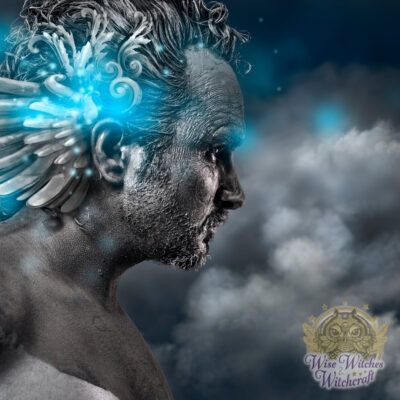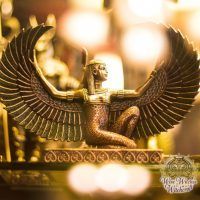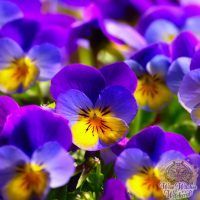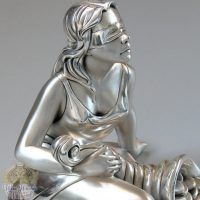Gods and Goddesses of Wicca: Finding and Working with Deity
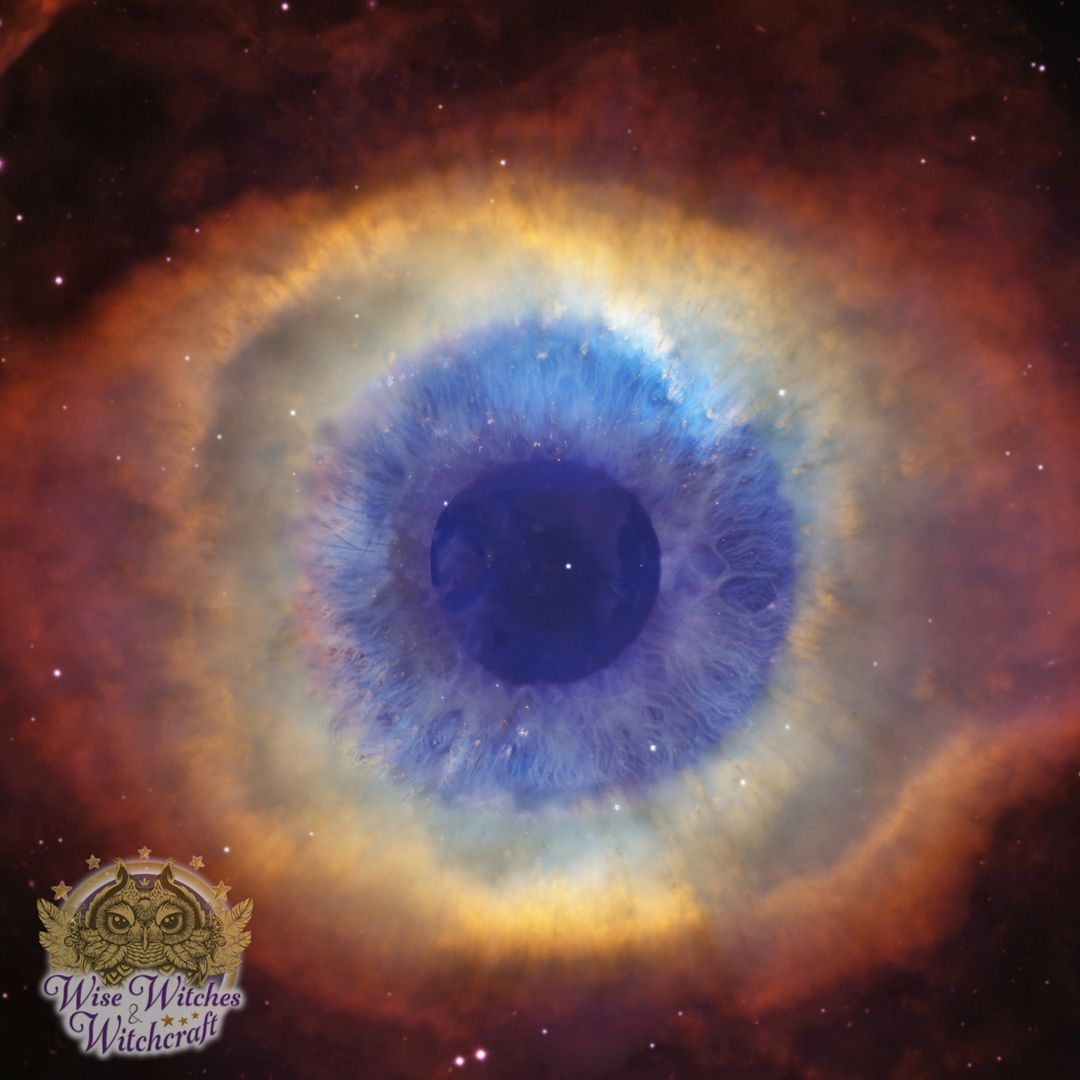
“Wow,” Thalia muttered. “Apollo is hot.”
“He’s the sun god,” I said.
“That’s not what I meant.”
– Rick Riordan, The Titan’s Curse
One God? Many Gods? Goddesses? The questions about Divinity are as old as time itself. The way in which a God or Goddess is portrayed reflects heavily on culture, era and the religious beliefs that grow from that characterization. Wicca is no different among world faith in endeavoring to carve out a view of the Divine that makes sense. Trying to find a tidy box for God is, however, a rather daunting task! Various leaders in the early years of the Craft tried laying out the basics. But, being that Neo-Pagans are a very individualized lot, of course there’s plenty of alternative views on this matter. Let’s take a gander.
How Many Gods and Goddesses Are There
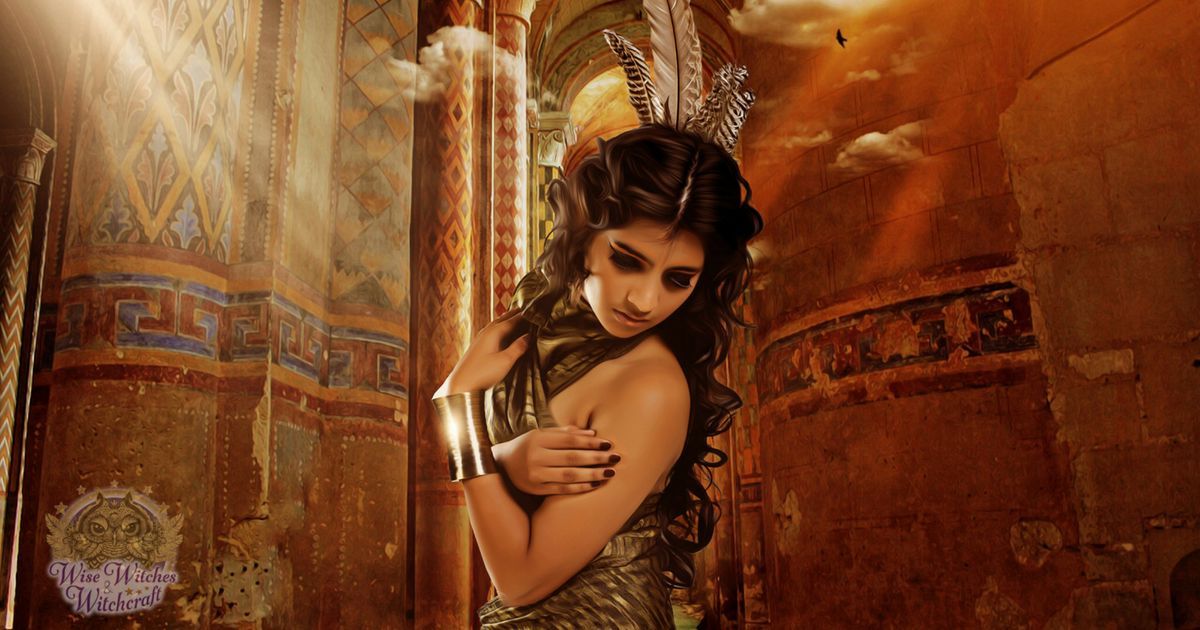
There are three basic ways that Wiccans describe God. Some feel that God is one being, vast, complex and gender neutral. The description we’ve heard used is that this Being is like a great crystal with infinite sides. What facet you see of that crystal depends on where (and when) you stand. So, it’s not surprising to see people in China (as an illustration) creating artistic renderings of the Divine that appear Chinese physically. This makes sense. After all, don’t children look like their parents? In turn, these people give that facet of the giant crystal a name and characteristics suited to their culture.
Duotheistic Wicca: The idea of a God and Goddess working in tandem is one that’s very common to many Wiccan Traditions. Using Gardnerian Wicca as an example, this school of magic emphasizes gender polarity in the Cosmic Divine family tree. Traditional Wicca often refers to the sacred male as the Horned God, and the sacred feminine as simply the Goddess (or sometimes the Great Mother). In other types of Wicca, the names of the God and Goddess come from a specific pantheon. Celtic Wiccans, for example, might use Brigit (a triple Goddess) and Dagda (a Father God).
Generally, God rules over things like hunting, war, death, power, truth, the Water Element (moon) etc. Mind you there are exceptions to this rule – humans, so contrary!
Polytheistic Wicca: The Polytheistic Wiccan observes many Gods and/or Goddesses in their practices. These Beings may come from one specific culture, or may have a more global nature, being chosen for specific qualities the practitioner reveres. Such powers might be described as having a very real existence and being able to manifest to believers through dreams, possession, or visions.
Other practitioners consider these various Beings as thought forms swimming around in the pool of the collective consciousness. While this concept may seem like a down-grade from Godhood, it’s really not. The collective consciousness (or super conscious) has the energy of thousands of minds who share certain underlying truths. When you broadcast those concepts, the impact is pretty astounding. It’s almost like genetic memory on a grand scale.
The Wiccan God Aspect & His Titles
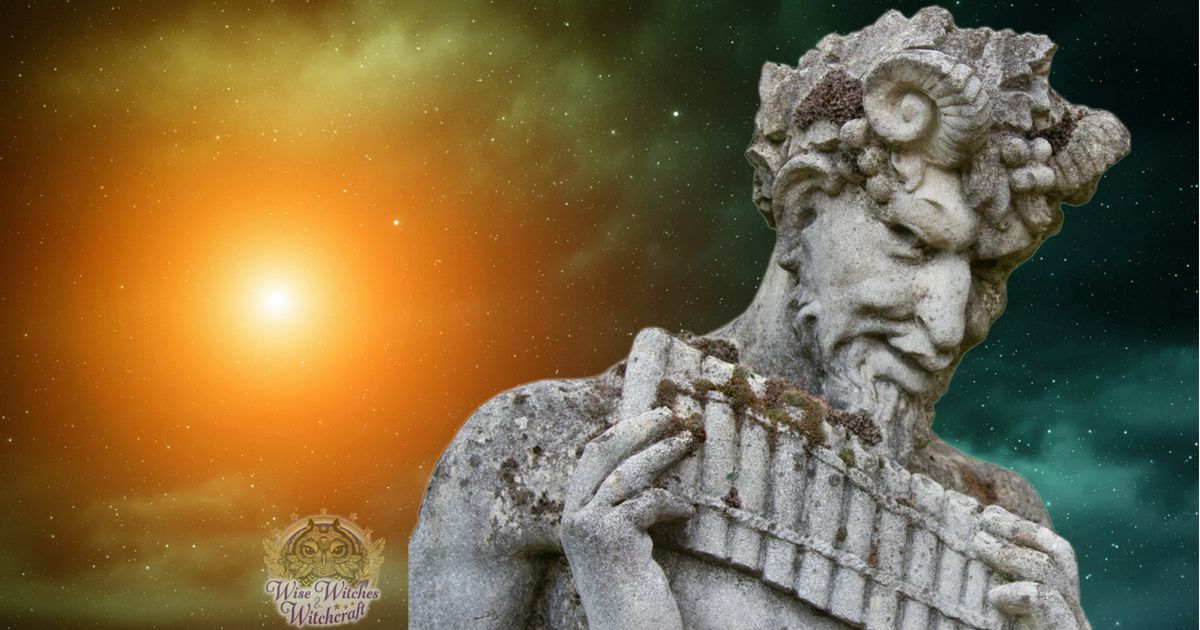
The Sacred Male in Wicca has several archetypes. The Celts called him Cernunnos. Greeks invoked Pan, British tales speak of Herne and Romans depict him as Faunus. This Being is vital. In some mythic approaches God has more than one face. The Oak King, and Holly King in Europe must share the year, one dying as the other is born anew. This, of course, has seasonal symbolism.
Wiccan God depictions illustrate various epithets for the Divine. There is the three-fold God (son, father, grandfather) such as Brahma, Vishnu and Shiva in Hindu belief, Odin, Vili and Vé or Odin, Freyr, Thor (Norse), and the Three Purities (Taoist). There are also:
- Solar Deities: Surya (Buddhism), Ra (Egypt), Apollo (Rome), Zeus (Greece), Tawa (Hopi)
- Father Gods: Jupiter (Rome), El (Canaanite), Zeus (Greece), Osiris (Egypt)
- Dying or Sacrificial Gods: Adonis (Greek), Attis (Asia Minor), Mithra (Persia), Krishna (India)
- Wise Old Gods: Mimir (Norse), Cronus (Greek), Grandfather Spirit (Native American)
- Child / Youthful Male Deities: Ihi-Horus (Egypt), Harpocrates (Rome), Hermes (Greece), Ningal (Babylon)
- Horned / Green Gods: Cernunnos (Celtic), Faunus (Rome), Pan (Greece), Pashupati (India), Tammuz (Mesopotamia)
- Lover / Consort Gods: Bel (Babylon), Adonis (Greek) Dagda & Llyr (Irish), Ormazd (Zoroastrian)
The Solar Gods also oversee the fire element (for the most part). They may also have influence on health, power, blessings, awakenings, justice and wisdom. Father Gods are portrayed often as all-knowing (all-seeing), protecting, teaching, witnessing oaths, and providing leadership. The Dying Gods offer themselves for a greater good but are reborn after a set amount of time to go through the cycle again. Wise Gods are the grandfathers of the Universe. They represent life’s end, sacred truths, and earned respect.
On the other end of time, the Youthful God has a light-hearted and often mischievous energy. He is a grand heroic figure filled with zeal. Horned Gods have a strong associations with nature and sexuality including fertility. Finally, the Lover/Consort Gods work cooperatively with a Goddess, pleasing her whims enthusiastically.
The Wiccan Goddess Aspect & Her Titles
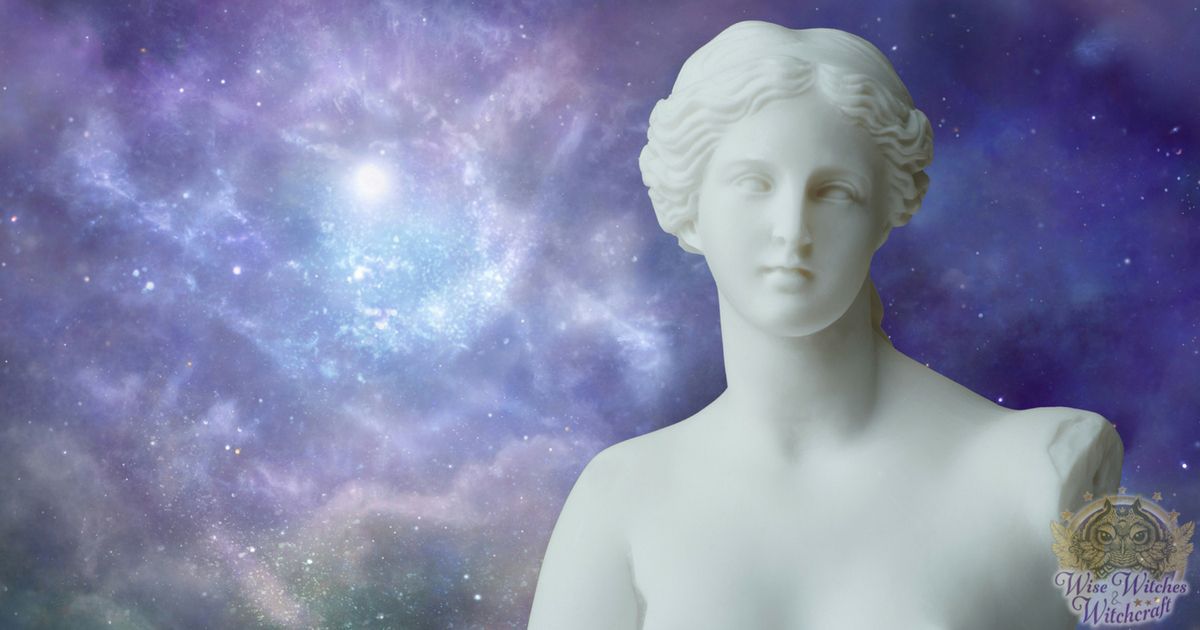
The Sacred Feminine has various archetypes even as the Sacred Masculine in Wicca. These include Isis (Egypt), Juno (Rome), Tiamat (Mesopotamia), Hera (Greece), Amaterasu (Japan), Inanna (Sumerian), and Mazu (China). Many of these archetypes are considered a Queen of Heaven and/or a Creatrix.
Wiccan tradition has various epithets for the Goddess too. There is the three-fold (or Triple) Goddess like the Three Fates (Greek), Land, Sea and Sky (Minoan), Matronae (Rome), and Shakta (Hindu). Other titles for the Goddess include:
- Lunar Goddesses: Ala (African), Selene (Greece), Arianrhod (Welsh), Chang Xi (China), Hina (Polynesian)
- Earth Goddesses: Gaia (Greek), Diti (Hindu), Ki (Sumerian), Mara (Latvian), Toci (Aztec)
- Mother Divinities: Cybele (Rome), Yemaya (West African), Isis (Egypt), Durga (Hindu), Coatlicue (Aztec)
- Crone / Death / Grandmother: Hecate (Greece), Ama No Uzumi (Japan), Baba Yaga (Russia), Spiderwoman (Native American), Kali (India), Sedna (Inuit)
- Maiden / Youthful / Virgin: Kore (Greece), Sophia (Hellenistic), Kurami (Nepal), Vesta (Rome), Fulla (Germanic)
- Star Female Deities: Asteria (Greek), Nuit (Egypt), Arianrhod (Celtic), Ishtar (Mesopotamia), Dou Mou (China)
Lunar Goddesses often oversee emotions, transformation, relationships, fate, dreams, magical skills and the Water Element. Earth Goddesses preside all that grows from the land (and lives thereon). They had associations with cattle, the harvest, providence and the Earth Element. Mother Divinities often had creatrix powers. They protect the young, inspire creativity and nurture our spirits.
The Crone aspect of the Goddess is the wise woman and grandmother who tells the stories of all time. They embody the waning moon, the season of winter and great wisdom. Her counterpart at the beginning of life is the Maiden, filled with hope and wonder. She has a purity of purpose and curiosity and corresponds with the season of spring, the new moon and the Air Element. Finally the Star Goddesses fill the night sky with radiance and wishes.
Discovering the God and Goddess
Wiccans have been known to work with one or several Divine figures. There’s really no hard and fast rule about this but for one: Be ready to invest time and energy in education. Just like you generally wouldn’t wander up randomly to someone’s door asking them for a gift, Gods and Goddesses (if you see them as personified) are like that. Even you are just using these images as a symbol or thought form, you still want to know a LOT about the type of energies with which you are working.
In a more personalized view of the Divine, if you plan on having several Beings with whom you work regularly it usually helps to keep them from the same pantheon. You want God and Goddess partners who speak the same vibrational language. If you’re mixing cultural contexts – you might want to work with each separately (you do now know who plays nicely together).
The question for many practitioners is do you go looking for God or wait until a God or Goddess finds you? Actually, both have merit. When you review various Divine entities, some will attract your attention for various reasons. Perhaps you like the strength portrayed or the kindness. In talking to people about their search, many say when they read about Being A or B, the name jumped out like a giant flag. As research continued, that Being resonated with their soul more and more. That’s a pretty good place to start a relationship!
In other moments the Gods come to us. You may have a dream, keep seeing emblems associated with a specific God or Goddess, encounter repeated signs, or have a vision in your meditations. There is no question that when the Divine shows itself you will KNOW IT. The feeling is hard to described but the word gobsmacked comes to mind (maybe GODsmaked would be better).
Now it may be that this personality came to you with one specific message. Or, it may be that this Being chose you as a magical ally of sorts. Either is a wonderful thing, but the latter requires that you take the next steps to firm up that cooperative spirit.
God and Goddess Correspondences for Connecting with the Divine
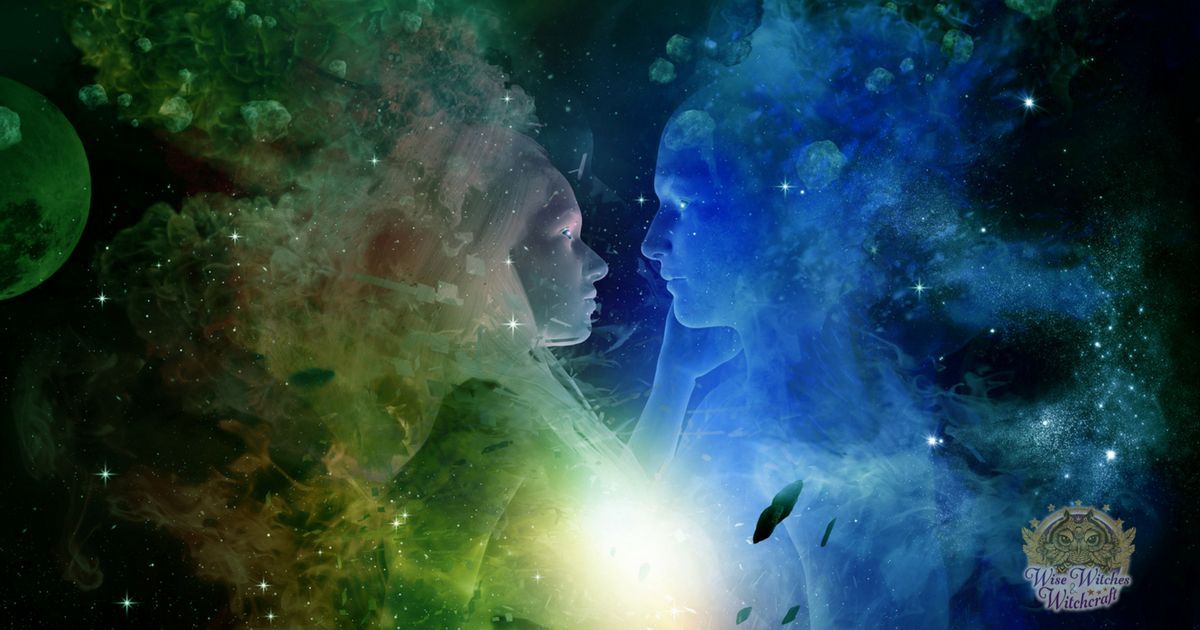
So, you’ve met someone new on your magical journey. You can’t really get to know them or build a relationship if you don’t invest some time. Part of your time will be research and study using good scholarship (avoid revisionist history wherever possible). As you gather information look for things associated with (or sacred to) this Being like:
- Colors
- Numbers
- Crystals & Gems
- Places (beach, cliff, forest, valley etc.)
- Herbs & Spices
- Animals
- Times of Day (hours, morning, noon, dusk, midnight)
- Celestial Objects (sun, moon, planets, constellations, meteors)
- Foods & Beverages
- Element (Earth, Air, Fire, Water)
- Characteristics
You may want to create a special section in your Book of Shadows for this information, so you can reference it easily.
Of these, characteristics are perhaps the most important because those traits should have some real meaning in your life. Don’t follow Mars, a war God, if you are an advocate for world peace, for example. No matter how hard you try, war and peace really don’t mix. So even if Mars seems all kinds of hunky and interesting, you’re looking in the wrong place for connection.
Connecting with and Honoring Wiccan Gods
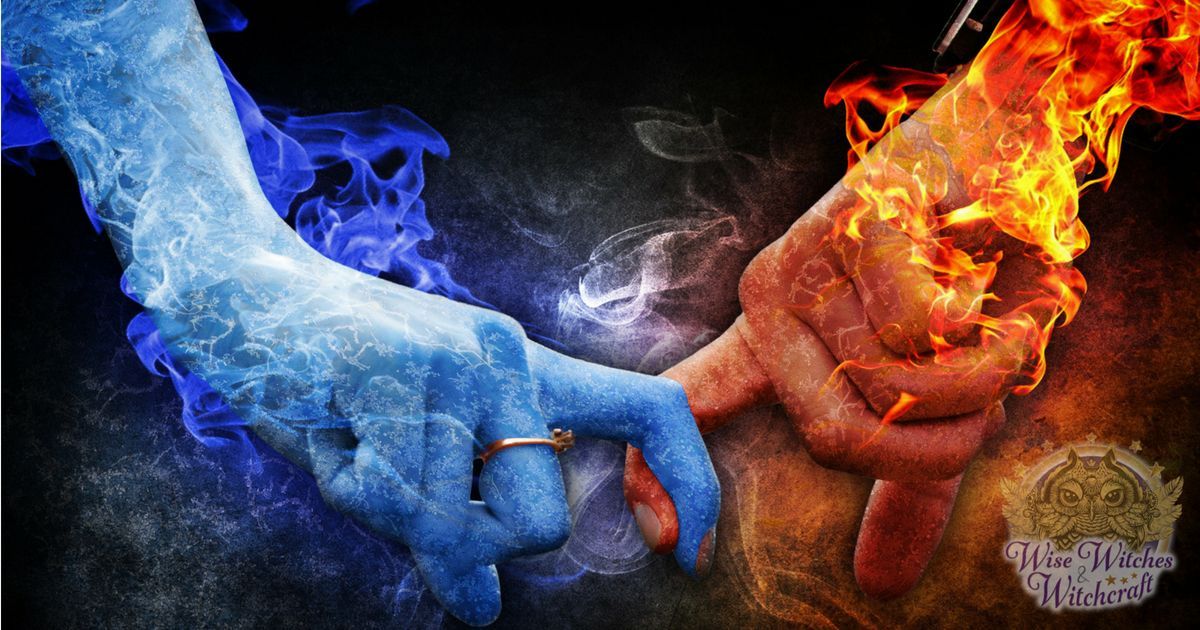
Speaking of connection, another part of the time you set aside for a God or Goddess is what we might call “face time”. You may pray, which is just like opening a conversation. Remember to leave time for replies! Meditation is another way of approaching the Divine, but in this case, you’ll likely be doing a lot more listening than talking. Get to know that “still, small voice” so that you can recognize it any time, anywhere.
A third option that is common in various Wiccan traditions is creating an altar or shrine at which your God(s) will be honored on a regular basis, often as part of your rituals. Setting up an altar isn’t difficult. Gather some items that will represent your God(s) – perhaps a small statue, a white candle, or sacred stones. Also add other meaningful touches like incense, libations, food offerings etc. Bear in mind that an elaborate altar might look nice, but they can be costly and experience breakage if you don’t position it carefully (think about both pets and children).
After you are all set up you can start using that place in a variety of ways including:
- Stop here in the morning and say “Hello.”
- Light a candle at the end of the day with gratitude.
- Work here during seasonal and other holiday celebrations, welcoming the Divine in your casting.
- Place images of family and friends here for blessings (or when they are in need).
Remember to keep notes about your experiences as you go. Your relationship with this energy grows as does your understanding the more you work with it. Isn’t it Divine?

